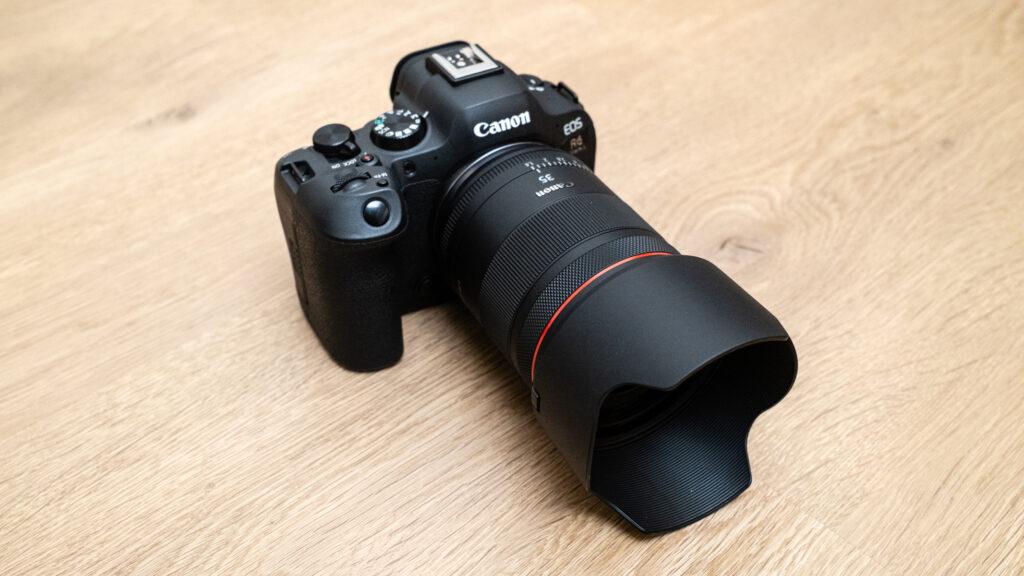NASA’s huge Artemis 1 rocket is counting down to a second launch attempt to return the moon and when it does, you can watch the historic mission live online for free.
The Artemis 1 mission is scheduled to launch no earlier than Wednesday, Nov. 16 at 1:04 a.m. EST (0604 GMT) from Pad 39B of NASA’s Kennedy Space Center in Cape Canaveral, Florida.
NASA will host a series of webcasts leading up to the uncrewed Artemis 1 launch, which will mark the first test flight of the Space Launch System megarocket with its Orion spacecraft. The launch day webcast will include special guests like actors Chris Evans, Jack Black and Keke Palmer.
Related: NASA’s Artemis 1 moon mission: Live updates

The last time a rocket this powerful thundered off a KSC pad was back in 1973 when a Saturn V moon rocket carried Skylab into orbit, marking the end of the Apollo era, so this month’s event should be quite a show.
Related: NASA’s Artemis 1 moon mission: Live updates
According to NASA (opens in new tab), the space agency will deliver comprehensive coverage of prelaunch, launch, and postlaunch activities for Artemis I when it comes time to light the candle. This momentous uncrewed dress rehearsal around the moon will clear the trail for a crewed moon-bound flight test with 2024’s Artemis 2, and an actual lunar landing by 2025 as part of Artemis 3.
Those lucky enough to be joining the Artemis 1 spectacle in Florida will be treated to the shock and awe of 8.8 million pounds of thrust fighting gravity and propelling the sleek SLS rocket and Orion space capsule into the heavens. For the rest of us, NASA just released its schedule for the free livestream broadcast to watch the mission from the safety and comfort of our own homes.
Live event coverage will air on Space.com courtesy of NASA Television, the NASA mobile app (opens in new tab), and the agency’s official website (opens in new tab), with prelaunch activities to be streamed as well.
Sure, it might not provide the same epic experience that the Earth-shuddering blastoff will offer, but it’s the next best thing and you don’t have to worry about the heat, parking hassles, or huge crowds.

On launch day, a live broadcast of the festivities includes celebrity appearances by Jack Black, Chris Evans, and Keke Palmer, as well as a patriotic performance of “The Star-Spangled Banner” courtesy of Josh Groban and Herbie Hancock. Then we’ll hear “America the Beautiful” played by The Philadelphia Orchestra and cellist Yo-Yo Ma, conducted by Yannick Nézet-Séguin.
Here’s a rundown of the upcoming launch activities leading up to liftoff.
Sunday, Nov. 13: 7 pm ET – Artemis 1 launch readiness briefing
On Sunday, Nov. 13, NASA will preview its Artemis 1 launch with a prelaunch press conference at the L-2 mark about 48 hours before the scheduled liftoff.
The press conference will begin at 7 p.m. EST (0000 GMT), with mission managers reporting on whether the Artemis 1 moon rocket is once again ready to fly. It will come after a daylong Mission Management Team meeting. Speaking during the briefing will be:
- Bill Nelson, NASA administrator
- Mike Sarafin, Artemis mission manager, NASA Headquarters
- Charlie Blackwell-Thompson, Artemis launch director, Exploration Ground Systems Program, Kennedy
- Emily Nelson, chief flight director, NASA Johnson
- Melody Lovin, weather officer, U.S. Space Launch Delta 45
Monday, Nov. 14: 12 pm ET – Artemis 1 prelaunch briefing
NASA will hold a media briefing on Monday, Nov. 14, at 12 p.m. EST (1700 GMT) to review the launch countdown status of the Artemis 1 moon rocket.
Speaking during this briefing will be:
- Jeremy Parsons, Exploration Ground Systems Program deputy manager, NASA Kennedy
- Melody Lovin, weather officer, U.S. Space Launch Delta 45
Tuesday, Nov. 15: 3:30 pm ET – Artemis 1 fueling coverage begins
The third launch attempt for NASA’s Artemis 1 moon mission will actually begin on Tuesday, Nov. 15, when NASA begins to fuel the Space Launch System rocket. That fueling process is expected to begin at 3:30 p.m. EST (2030 GMT).
The core stage of the SLS rocket can hold about 730,000 gallons of super-cold liquid oxygen and liquid hydrogen, so loading that propellant will take up to 3 or 4 hours.
There is a critical moment to watch for in the fueling: the early chill down of the four main engines on the SLS rocket, something that is vital for the launch to proceed. NASA successfully tested this step in a September fueling test.
Tuesday, Nov. 15: 10:30 pm ET – Full Artemis 1 launch coverage
NASA’s full launch coverage webcast for Artemis 1 will begin again on Nov. 15 at 10:30 p.m. EST (0330 GMT). This part of the agency’s webcast will be in English.
“Coverage will continue through translunar injection and spacecraft separation, setting Orion on its path to the Moon,” NASA wrote in a description.
Wednesday, Nov. 16: 12 am ET – Artemis 1 Spanish broadcast
An hour before launch, NASA’s will begin its Spanish-language webcast to chronicle the Artemis 1 mission. It is scheduled to begin at 12 a.m. EST (0500 GMT).
The webcast will run through launch and the first 15 minutes of the mission after liftoff. Following the launch, you can get Spanish-language updates on Artemis 1 through the NASA en Español social media channels.
Wednesday, Nov. 16: 1:04 am ET – Artemis 1 Liftoff
This is the moment of truth for NASA’s Artemis 1 mission: the first launch window for the Space Launch System rocket at 1:04 a.m. EST (0604 GMT).
NASA actually has a two-hour window in which to try to launch the SLS booster, so liftoff could occur anytime between 1:04 a.m. to 3:04 a.m. EST (0604-0804 GMT), weather and technical systems permitting.
Wednesday, Nov. 16: 4 am ET – Artemis 1 post-launch briefing
After launch, NASA will hold a post-launch press conference scheduled for no earlier than 1 hour after the launch broadcast ends. NASA is currently targeting this briefing for 4 a.m. EST (0900 GMT) start time for this briefing, but that could change as the day progresses.
Below are the NASA officials scheduled to speak in the briefing.
- Bill Nelson, NASA administrator
- Mike Sarafin, Artemis mission manager, NASA Headquarters
- Mike Bolger, Exploration Ground Systems Program manager, Kennedy
- John Honeycutt, Space Launch System Program manager, Marshall
- Howard Hu, Orion Program manager, NASA’s Johnson Space Center
- Emily Nelson, chief flight director, Johnson
Nov. 16: 8:30 am ET – Orion trajectory burn
If all goes well with the launch, NASA will host a webcast to highlight the first trajectory maneuver to send the Artemis 1 Orion beyond Earth orbit and off to the moon.
The time of this coverage may change depending on the launch time of the Artemis 1 mission, but it is currently set for 8:30 a.m. EST (1330 GMT).
Nov. 16: 10 am ET – Orion views of the Earth
The last major Artemis 1 launch day event is when the Orion spacecraft is expected to beam its first views of the Earth from space. That is scheduled for 10 a.m. EST (1500 GMT) on Nov. 16.
Like the outbound trajectory maneuver, the timing of this broadcast is subject to change depending on the exact launch time and the health of the Orion spacecraft.
Previous Artemis 1 briefings
NASA’s Artemis 1 mission has been delayed for months and saw two launch attempts on Aug. 29 and Sept. 3 that were foiled by technical issues and weather. For this latest campaign targeting a Nov. 16 launch, NASA has held two briefings about the status of the Artemis 1 vehicle and its Orion spacecraft.
Here’s a review of those briefings/
Nov. 3: Artemis 1 pre-rollout update
On Nov. 3, NASA held a press conference to discuss the rollout plans for the Artemis 1 moon rocket on Nov. 3. You can listen to a replay above.
Friday, Nov. 11: NASA Artemis 1 update post-storm
On Friday, Nov. 11, Jim Free, NASA’s associate administrator for exploration systems development, held a teleconference to update the public on the status of the Artemis 1 moon rocket following Tropical Storm Nicole.
Free detailed the repair work and other activities to ensure the Artemis 1 rocket will be ready to launch on Nov. 16.
For a complete rundown of all the talks and activities surrounding Artemis 1’s thrilling flight, check out NASA’s detailed coverage schedule (opens in new tab).
Whether staking out a sweet in-person spot to watch Artemis 1 or taking it all in via NASA’s livestream options, it’s destined to be the pyrotechnics show of the year!


